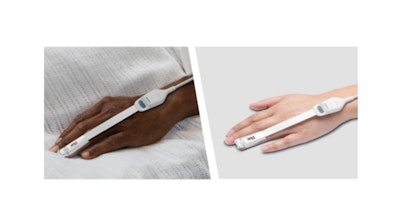
Masimo announced the findings of a retrospective, peer-reviewed study published in the Journal of Clinical Monitoring and Computing in which Dr. Vikrant Sharma, along with Dr. Steven J. Barker, Dr. William C. Wilson, and colleagues at Masimo performed a focused analysis of previously published data to evaluate the impact of low perfusion on the performance of Masimo SET pulse oximetry across a variety of skin pigmentations. The analysis demonstrated that Masimo RD SET sensors accurately measured oxygen saturation (SpO2) for both Black and White subjects when perfusion index (Pi) was normal and when Pi was low – adding to the body of evidence that Masimo SET pulse oximetry delivers accurate values across the skin tone range, with no clinically significant difference in accuracy or bias, even in challenging conditions.
In a study published in 2023, Drs. Barker and Wilson analyzed Masimo laboratory data obtained from self-identified Black and White volunteer subjects to evaluate differences in Masimo pulse oximetry accuracy and bias on the basis of skin tone. To do so, they reviewed more than 7,000 paired data samples (collected between 2015 and 2021) from 75 subjects (39 Black and 36 White) and found no clinically significant difference in accuracy or bias.
Based on their analysis, the authors concluded, “Masimo SET pulse oximeters with RD SET sensors are accurate for individuals of both Black and White races when Pi is normal, as well as during conditions when Pi is low. The ARMS for all conditions studied is well within FDA standards. This study was conducted in healthy volunteers during well-controlled laboratory desaturations, and results could vary under certain challenging clinical conditions.”
However, the authors noted that controlling conditions in the laboratory setting helps “minimize confounders that are present in clinical scenarios, allowing for greater focus on the topics of skin tone and Pi. Indeed, abnormal hemoglobin species (e.g., carboxyhemoglobin and methemoglobin) [known clinical SpO2 confounders] were measured and reported in the earlier paper by Barker and Wilson, and the values were similar (statistically the same) between Black and White groups.2 Also, one can only ethically conduct desaturation studies using healthy volunteer subjects in a safe setting.”






















